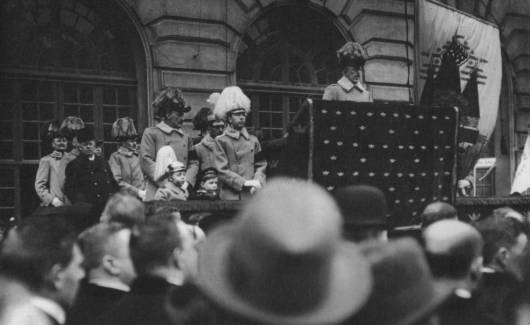ABSTRACT
This study looks at how crises affected the economies and business cycles in Slovakia and other Central European states. It compares both the economic and non-economic causes, as well as the various effects following the collapse of the Habsburg Monarchy in 1918 with the problems that emerged after the disintegration of the Soviet Bloc in 1989. A careful analysis shows that substantial changes extended to the legal system as well as the entire political and socio-economic system. At the same time, quite different processes were also occurring in both eras. The extent of their impact depended upon the specific conditions in the post-1918 successor states or the particular post-communist countries. Mainly, the initial economic conditions and subsequent economic and political developments after 1918 and 1989 would determine the repercussions of the crises.
The development of economic cycles in Slovakia after 1918 and after 1989 reveals many striking parallels. Countries which came into existence after the demise of the Habsburg Monarchy, such as Slovakia, were in a similar situation after 1918 as the post-communist countries after 1989. Economic development in the 1920s and 1990s of the 20th century in Slovakia and in neighboring countries naturally also show particularities and differences.
The shared characteristic was the partial or entire change of the social, economic, and political system, as well as legislative changes, accompanied by a collapse of long-term markets and a loss of trade outlets. A fundamental change of market orientation occurred, and mainly in the direction of the developed Western countries. However, the countries which came into existence in the 1920s strengthened the role of new trade barriers, and in the 1930s aimed to achieve autarky, whereas the post-communist countries of central and south-eastern Europe rejected the barriers to economic integration through the process of joining the EU. Another important parallel occurred in the realm of ownership. In the successor countries, complex capital transfers happened; in Czechoslovakia, for instance, it involved land reform and other property changes. Post-communist countries carried out a complex privatization process. However, after the demise of the Monarchy, the continuity of a market economy and private ownership persisted, whereas privatization after 1989 brought about a complete change in the character of ownership when the recent transition from central control to a market economy occurred.
Economic and political changes in the 1920s and 1990s put to the test the viability of individual companies, economic sectors, and the whole economic structure. As a result, profound structural change took place in the economy of particular countries. The aforementioned processes shared similar concomitant circumstances and measures, such as currency reforms, the exchange of money, inflation, and a significant social impact. The collapse of the Habsburg Monarchy and the Soviet bloc resulted in processes which led to a renewed cycle of global recovery, and further complicated the economic and structural changes in the particular countries.
The previously noted factors appeared in certain countries, depending on specific conditions; these mainly concerned the achieved level of social and economic development, the character and structure of the economy, the character of the political system and the strategy of politics on economic issues. It can be stated that in the case of Slovakia, those basic conditions were unfavorable. In the context of the new economic situation, Slovakia had an inappropriate economic structure after the fall of the Habsburg Monarchy and the Soviet Union.
Before 1918, the present-day area of Slovakia belonged to the most industrially developed regions of Hungary. It remained a mainly agrarian country; the development of industry occurred in Hungary based on a political program which aimed to industrialize, but focused only on certain parts of Hungary and only on certain sectors (mining, the iron industry, textiles, the pulp and paper industry, the leather industry).
In addition, production depended entirely on consumption in other parts of Hungary and on government orders. That is why the structure of the economy showed some serious disproportions hidden by closed markets and a whole system of economic preferences made by the government in the area of taxes, loans, shipping discounts and direct financial grants (Faltus 1983, 544–558; Kováč 2004; Horváth, Valach 1975; Vadkertyová 1975, 417–440).
Economically, the fall of Austria-Hungary brought about the disintegration of the united market of the monarchy, and disrupted the infrastructure and the complicated process of forming economic areas for new central- European countries. The area of Slovakia created a new economic space along with Czech regions, which had assumed the biggest share of industrial production made in the more developed Austrian part of the Monarchy. Slovakia’s share in the industrial potential of the new country based on the statistics from 1910 can be estimated to be about 8 %. The capital share of Slovak financial institutions created approximately 6 % of the value of the banking industry in Czechoslovakia. Slovakia played a more important role only in agriculture, where it accounted for approximately one third of the crop production and animal husbandry. The borders of the successor countries cut Slovakia’s business sphere off from the main trade outlets in former Hungary. The large centralized factories, which produced iron, chemicals, textiles, and other products, depended on markets outside Slovakia; they were hit head on by the competition of more mature industries from the Czech regions, which also had to solve the problem connected with the loss of trading outlets in a smaller marketplace. After the demise of the Kingdom of Hungary, Slovak companies lost tax, tariff, borrowing, and other advantages provided by the authorities, as well as lucrative government orders. The breakdown of infrastructure turned out to be one of the greatest problems, mainly the disruption of the railway network, which appeared to be the one more developed segment of the transport system in Slovakia. It became necessary to rebuild the whole network in a westward direction toward the Czech regions and Western markets. The underdeveloped road infrastructure faced a similar situation. The banking industry lost its ties with central banks in Budapest, which caused a reduction or even a cessation of capital flow. Key companies were left without capital backing (Faltus, Průcha 1969, 15–27; Průcha 2004, 41–48).
The influence of an entire set of negative factors was initially muffled by a short post-war boom in 1920–1921, due to conditions of gross shortages and high demand. In Slovakia, there were relatively successful outcomes, as 129 new joint-stock companies started up and the banking industry increased national Slovak capital. However, the boom was restricted by a state regulated economy. Prices increased and inflation grew, even if it was more benign in comparison with surrounding states. Another phenomenon of the boom was the expansion of concerns and banks from Czech regions, connected to profitable Western capital, to the entrepreneurial sphere and banking industry of Slovakia with help from the economic legislation of the new state (the Nostrification Act of 1919). In the Slovak space, the banks and corporations of the Czech regions took on the functions of Budapest’s great banks and the Austrian-Hungarian companies from the preceding era. At the global level, a post-war economic crisis had already appeared in 1920 and it had to balance the disparities of a war economy, post-war reconstruction and hyperinflation (Andrýs 1922, 267–273; Skorkovský 1923).1
In Czechoslovakia, a crisis broke out in the second half of 1921 and continued until 1923. Unprofitable companies ceased to exist, production declined, and prices fell. In Slovakia, the recession crisis saw a 30 % decline in industrial production, which was far more than average on the international scale. In the successor countries of Austria-Hungary, the crisis manifested even more serious signs of far reaching significance. It also revealed the negative aspects of the breakdown of a common market and showed its impact on a large scale. Important factories, which lost their trade outlets in the crisis situation after 1918, found themselves in an untenable situation, and dozens of them simply disappeared. In the less developed economy of Slovakia, the disappearance of one big company had a long-term impact on the social and economic development of an entire region. The corporate sector was handicapped by a significant deterioration of productive conditions, most of all in railway transport. The demise of the Monarchy and negative conditions of production caused an outflow of capital from Slovakia and a disruption of capital expansion from the Czech lands. That is why other companies were left without capital assets and they ceased to exist. The tendencies mentioned above handicapped most industrial branches. The worst situation was in the relatively developed iron industry, in which Hungarian capital concerns lost their interest and they agreed to their liquidation in exchange for compensation. Most of the ironworks disappeared (Krompachy, Zvolen, Hnúšťa) or changed their production plan (Trnava). Because of that, the Slovak economy lost a fundamental part of a sector, which, until the formation of Czechoslovakia, had constituted the core of its industrial potential. Other handicapped sectors included the chemical industry (Dynamit Nobel Bratislava), the textile and glass industry, the food industry and the stagnating mechanical engineering industry. In 1922–1924, the crisis in Czechoslovakia carried from the areas of production to the lending sphere. The deflation of currency had a great influence on these developments, especially during the pivotal year of 1922. Deflation safeguarded the long-term and stable development of the currency, but it undermined export industries and merged them with banking. The losses of the banking industry in Slovakia reached the high figure of 643 million Kčs (Czechoslovak crowns). The banking system of Czechoslovakia was saved from certain collapse by a reorganization of the country on the foundation of legislation during 1924 (Faltus 1966; Strhan 1960).
In years 1924–1929, the economy of Czechoslovakia experienced a relatively successful boom within the context of a worldwide economic expansion. It resulted in about a 40 % increase in industrial production (Průcha 2004, 148–164). This, in fact, applied only to the Czech lands. The enterprise sector of Slovakia went through a complicated process of structural changes. Production increases only occurred in sector branches which found new outlets in the changed conditions of the domestic and international market, as well as the capital hinterlands (the pulp and paper industry, the wood industry, the cement industry, the rubber industry, the magnesium industry, the electric industry, the petrochemical industry and the printing industry, some segments of the food sector), or ones which received support from the economic policy of Czechoslovakia (the electricity supply industry). Others managed only to reconstruct pre-war capacities and production potential (mining, the textile industry, the food industry as a whole) and some of them remained below the pre-war level of production (the iron industry, the chemical industry, the glass industry). That is why until the end of the 1920s, the entire capacity of industrial production merely reached or just exceeded the level of the crisis year of 1913. The resulting effect was a stagnation of industrialization. Very slow progress in infrastructure reconstruction contributed to that, such as the revival of the railways and road network, as well as a slow elimination of other unprofitable production conditions in Slovakia (Hallon 1995, 68–87; Hallon 2004, 309–324).
One can visually document the changes in the industrial structure as a consequence of the disintegration of the united Monarchy’s market and postwar economic attitudes by looking at the increase in the number of active working people in particular economic sectors during years 1910 – 1930. It is based on a sum of enterprises and factories in statistics for the given years. The comparison of production amounts or its value in the given period could be even more objective and visual. Unfortunately, we do not have access to sufficient statistical data.
Table 1 Changes of the industrial structure in Slovakia in years 1910–1930 according to number of active employees.
| Branch | Employment on December 31, 1910 | Employment on May 27, 1930 |
|---|---|---|
| Mining | 9600 | 11037 |
| Iron and steel industry | 9434 | 3082 |
| Metal working | 5881 | 5233 |
| Engineering and electrotechnical industry | 2621 | 5821 |
| Building materials industry | 5986 | 12877 |
| Glass industry | 3429 | 2684 |
| Chemical industry | 2344 | 3230 |
| Pulp and paper industry | 4291 | 5412 |
| Textile industry | 11231 | 11945 |
| Leather industry | 1267 | 1277 |
| Wood industry | 9678 | 13192 |
| Food industry | 12091 | 11147 |
| Printing industry | 248 | 978 |
| Electrical industry | 533 | 1386 |
| Building industry | 4618 | 14353 |
| total | 83375 | 104600 |
Source: Table 1 is compared according to the statistics of number of factories and employees on December 31, 1910 and May 27, 1930, which were compiled by (Faltus, Průcha 1969, 287; Faltus 1987, 73–84).
If we compare the development of industry in Slovakia after 1918 with other successor countries of the interwar period – Hungary, Poland and Austria – it is clear that they manifest very similar trends of development. Similar to Slovakia, other successor countries underwent structural changes of industry depending on initial economic relations after the decline of the Monarchy and due to decline of a unified market in Austria-Hungary. Crucial branches of industry experienced the greatest decline or stagnation because they were most dependent on market outlets in the economic realm of the former Monarchy during the 1920s. In Slovakia, this applied mainly to the building materials industry, in Hungary the engineering industry and food industry, in Austria the building materials industry, the iron and steel industry, the engineering industry, and in Poland, for example, brown coal mining and petroleum and non-ferrous metals production. Development occurred in branches which found new market possibilities in the changed conditions; for instance, in Hungary the textile industry got rid of Czech and Slovak competition. Until the end of the 1920s in all the above countries, the overall amount of industrial production barely exceeded the pre-war level, or did not even reach it, as was the case in Austria and Poland. The only exception in the central European region was the Czech lands; because of a more favorable starting point after the decline of Monarchy and a wealthier industry, they managed to overcome losses or stagnation in some economic sectors (textiles, coal mining) and replaced them with growing sectors (the engineering and electro-technical industries, the footwear industry), resulting in a large increase in the amount of industrial production. In order to illustrate the comparative development of industrial production during the interwar period in Slovakia, the Czech lands, and three other successor countries, here is a table presenting the level of success achieved in industrial development.
Table 2 Index of industrial production in Czech lands, Hungary, Poland, and Austria in 1929 and 1938 in comparison to 1913 (1913 equals 100 %).
| year | Czech lands | Hungary | Slovakia | Poland | Austria |
|---|---|---|---|---|---|
| 1929 | 142 | 112 | 108 | 91 | 98 |
| 1938 | 140 | 128 | 123 | 93 | 77 |
Nota bene: Presented data is based on different statistical surveys (the number of employed workers, the amount of production, the value of production), and that is why the table is an example.
Source: (Landau,Tomaszewski 1971, 59, 289–290; Fischer 1987, 543, 796; Faltus, Průcha 1969, 14, 25, 43, 287; Lacina 1996, 286–287).
Overall, agriculture in Slovakia enjoyed a more advantageous position during the 1920s. After the demise of the Kingdom of Hungary and creation of new borders with Hungary, Slovakia acquired the market outlets of Hungarian producers in Czech regions. It was also protected by customs barriers which the governing circles of Czechoslovakia, dominated by the agrarian party, had passed. Those favorable factors were reflected mainly in crop production. Land reform in Czechoslovakia removed the greatest inequalities in the structure of agricultural enterprises, mainly because of the decline of aristocratic and clerical estates. The modernization of production and the development of progressive middle-sized farms achieved only a little progress (Faltus, Průcha 1969, 133–134, 157, 206).2
The Great Depression economic crisis of 1929–1933 interrupted the gradual consolidation of Slovak economy by the end of the 1920s. However, the industrial recession was less sharp than in the Czech lands because Slovakia had experienced a weaker economic boom in the previous years. According to contemporary analyses, the level of employment decreased by 25 % during years 1930 – 1932 and the number of worked hours decreased by 29 % in industry. The most important problem in agrarian Slovakia was agriculture, which still employed approximately 60 % of active working people. An agricultural crisis in Slovakia and all of Czechoslovakia broke out in 1929 and farming production was affected mainly by the collapse of prices for products in 1928–1932 by about 42 % (Hallon 2004, 324–327; Lacina 1974, 38–44, 49–51).3 At that time, the crisis stimulated the ruling powers towards investments in infrastructure, with the interest of creating new job positions, and this in turn accelerated the development of railways, roads, and the energy sector. Ruling circles moved towards a new philosophy of state-monopolistic interventions in economy. In the second half of the 1930s, investments in the armaments industry emerged as a new phenomena because of the military threat to the country. The main objective of those investments was to prepare Slovakia as a potential hinterland against Nazi Germany. However, building an infrastructure more quickly and with a lower-paid workforce motivated investment in non-military areas of production. Companies from Czech regions such as Škoda, Zbrojovka Brno, Baťa and others rejuvenated the process of industrialization in the second half of the 1930s in Slovakia. In this period of time, the economic and political concept of solving the economic problems of Slovakia began to form. The economic revival influenced mainly the western and north-west parts of Slovakia, which were situated closer to the markets of western Europe and possessed a better developed infrastructure, while most other regions of Slovakia continued to lag behind (Hallon 1995, 147–161; Ferenčuhová, Zemko 2012, 366–372).
The heavy armaments industry, which started to form in the 1930s, lasted throughout the Slovak Republic from 1939 until 1945. Then after 1948, it continued during the socialist era of industrialization and the depths of the Cold War and formed the basic framework of the Slovak economy. The industrialization of Slovakia was definitively completed in the system of the centrally planned economy. The fast pace of industrialization was evidenced by the fact that in 1948–1989, the industrial potential of Slovakia increased approximately 29 times; on the other hand, the industrial potential of the whole country increased only tenfold. In the 1980s, the long-term plan of balancing the industrial level of Czech regions and Slovakia was nearly attained. In fact, production reached parity in both regions. Apart from the heavy armaments industry, the structure of the Slovak industry was dominated by raw material processing and the production of semi-finished products for final production in the Czech regions. This kind of heritage from the socialist economy was extremely disadvantageous for a market economy after 1989 (Turčan 1960; Ferianc 1987, 190; Londák 2012).
The common denominator of economic development in post-communist countries after 1989 was the decline of economic ties, the switch from centrally planned economies towards a market economy, privatization, and a radical transformation of the entire economic structure. In the case of Czechoslovakia, the former Yugoslavia, and the Soviet Union, additional factors consisted of national and regulatory changes and the formation of economic areas in new countries. Other phenomena included monetary reforms, inflation, the disappearance of entire segments of the economy, and severe social repercussions.
The fluency, speed, and the depth of economic transformation were closely connected with the development of the economic politics of individual countries. Many expert analyses agree with the view that the transformation in Slovakia, as far as the influence of globalization and structural changes are concerned, took place in a few phases, which were closely connected with the actions of individual governments since 1990. In the first period of 1990–1992, under the conditions of the federal state, basic assumptions developed with the onset of monitored processes, in particular, the historical change of the social system, which followed the economic changes. The opening of the Slovak economy to the world made possible actions of a revolutionary character, such as the decentralization of economic governance, foreign trade and price liberalization, the achievement of the domestic convertibility of currency, and the creation and implementation of the first phase of privatization. After 1992, the further introduction of those changes was carried out. A similar scenario of economic reforms in the observed period also occurred in 14 other post-communist countries, mainly in the small central European countries, which later belonged to the Višegrad 4 and CEFTA (The Central European Free Trade Agreement).
The economic reforms in the period of 1990–1992 were followed by the immediate unravelling of post-communist economic ties and a change of orientation towards countries with a market economy, mainly with EU states. Unlike what happened in 1989, a deep economic recession ensued in 1991–1993, reaching the industries of 5 CEFTA countries, which saw declines of between 29 % and 39 %. The amount of mutual trade between Hungary, Poland and Czechoslovakia decreased in years 1988–1992 by 42 % of the GDP (gross domestic product). In 9 countries of the former Eastern Bloc, the GDP declined by about 23 % in years 1989–1991. Unemployment increased on average from 0 to 9 % (Borovský 2001, 448–451; Godfrey 1995, 6–8). During the change of external economic relationships, the problem for Slovakia was a disadvantageous commodity market in foreign trade. In 1991, a nearly 67 % share of Slovakia’s exports came from industrial branches, mostly the iron and steel industry and heavy industry, which had provided the bulk of production to markets of other [former] satellites of the Soviet Union. Above all, this affected the heavy armaments industry. The former regime had been preparing the conversion of the heavy armaments industry, chiefly due to reduction of international tensions. After the collapse of eastern markets and change of the whole philosophy of economic politics in Czechoslovakia, the production of so-called special technologies decreased at a significantly faster pace. The following table no. 3 illustrates the development of orientation of Czechoslovakia’s foreign markets and that of other post-communist countries, in comparison to mature Western countries in the short period of time between 1989 and 1992.
The position of Slovakia and other post-communist countries in foreign trade relations became largely influenced by developments in the monetary and financial areas. A common characteristic was high inflation, caused mainly by the liberalization of prices. In Czechoslovakia, the inflation before 1989 officially reached about 1 %, and according to real estimates about 2.5 % per year. However, in 1991 inflation rose 65 %, according to the price index (Švejnar 1993, 29–33). In 1992, the price level declined and inflation stabilized. At the beginning of the 1990s, historical changes affected nearly all European countries with centrally planned economies and resulted in a proposal for a program of complex privatization and its subsequent execution. This process opened the door to foreign capital. After a heated controversy about several concepts in Czechoslovakia, the voucher method of privatization won out, therefore, the gratuitous distribution of state property to the widest strata of citizens took place based on coupons representing a share of the capital. According to the plan, the privatization would be implemented in several waves. The first one started with a ratification by Czechoslovakia’s government in August 1991 and was to be completed in March 1993. For a complete or partial denationalization in the first wave, 678 big companies enrolled, worth 169 billion Kčs (Czechoslovak crowns). Of these, 48 % were privatized by the coupon method and only 7 % were resold to investors. Another 28 % of the enterprises came under the management of National Property Fund.4
Table 3 The change of orientation of foreign markets of Czechoslovakia and selected post-communist countries, in comparison to mature Western countries in period of 1989 – 1992 in % of sales value.
| CZECHOSLOVAKIA | HUNGARY | POLAND | ROMANIA | ||||
|---|---|---|---|---|---|---|---|
| Western countries |
Other | Western countries |
Other | Western countries |
Other | Western countries |
|
| 1989 | 37,6 | 47,2 | 46,2 | 40,1 | 44,9 | 39,4 | 32,5 |
| 1992 | 63,2 | 25,4 | 68,9 | 21,3 | 72,1 | 15,9 | 51,8 |
Source: “Zmeny strategickej orientácie obchodu postkomunistických krajín” (1993), Trend 45, p. 4.
The first wave of privatization in Czechoslovakia attracted great interest because it provided the opportunity for immediate profit from the right to resell acquired shares to a company or to investment funds, which the citizen could take part in. The participation of 2.6 out of the 5 million citizens of Slovakia did not suffice to overcome the negative social impacts of economic reform. The most noticeable was a rise of unemployment. In 1991, it had reached 2.6 % in the Czech lands, and 10.4 % in Slovakia. Among the main reasons causing those problems was the structure of the Slovak economy (Godfrey 1995, 6–8). Its foundation continued to be the energy-intensive processing of imported raw materials and semi-finished goods for final processing in the Czech lands. Economic reform and initial restructuring had far more serious consequences in Slovakia. Economic problems contributed to the popularity of new movements on the Slovak political scene, requiring fundamental change in the constitutional arrangement. In June 1992, the Movement for a Democratic Slovakia (Hnutie za demokratické Slovensko) led by Vladimír Mečiar won the elections. In Czech lands, the right wing party and its leader Václav Klaus took power, aspiring to hasten all the reforms. The new national governments did not manage to agree on two basic questions, which were the constitutional arrangement of the country and the concept of economic reform. For this reason, the presidents of national governments, V. Klaus and Vladimír Mečiar, personally decided to divide up the state.
In the first period of existence as a separate country, until the end of 1995, favorable trends predominated in the Slovak economy, which were a consequence of the government’s actions to defend the new currency and the independent economy of the new country, as well as the boom in Western markets. There was a significant rise in foreign trade, increasing the share of trade exchanged with developed capitalistic countries. In October 1995, it resulted in the full liberalization of the foreign currency exchange and full convertibility of the credit account balance. For major world currencies, a fixed exchange rate was introduced, determined first by a basket of seven currencies, and then by the two major currencies (DM, USD). Initially, this arrangement had a positive influence. The government supported mainly exports with special measures such as a 10 % devaluation of the Slovak crown (Slovenská koruna) in July 1993 and a 10 % import surcharge (Beblavý 2000, 97, 109–111). Semi-finished products predominated among exports, which at that time were in demand on the Western market, mainly because of lower prices; that helped to preserve the traditional basis of Slovak industry. A balanced proportion of imports and exports was possible to sustain only until 1995. After that, imports predominated, because of a passive foreign trade balance (Jakoby 2000, 145–146).5
The decisive factors for further economic development and a change from an unprofitable economic structure resembled that of other transitional countries – an influx of foreign investments and the engagement of a country in the globalization process. Joining multinational economic structures depended mostly on the nature of privatization. In fact, for the privatization process, the first Mečiar government rejected the coupon method and was looking for its own alternative plan for privatization. In 1994, diverse views on privatization in Slovak ruling circles led to the dismissal of Mečiar’s first government and enabled the short intermezzo of Jozef Moravčík’s government. As one of its main tasks, Moravčík’s government delineated a new plan for coupon privatization. The second Mečiar government, which followed in October 1994, trashed all those ideas and presented a completely new alternative method based on bonds. In reality, the main form of privatization became a direct sale of companies to domestic investors in long-term installments, with the goal of strengthening the Slovak entrepreneurial class. This process, designated as a management privatization, had a very vague background and reduced the influence of foreign investors even more than the former state. In the years 1993 to 1995, 11 companies participated in the sale, which were priced at 4.5 billion Slovak crowns (Sk), and their share in the purchase price of the companies decreased within those years from 24 % to 11 %. In the following period, the inflow of foreign capital grew very slowly and lagged behind other CEFTA countries in that direction (Marcinčin 2000, 291–296).6 Government and economic arrangements started to affect the relationships with foreign markets in a negative way, mostly through the stable exchange rate, which led to an overvaluation of the currency, a decrease of competitiveness, and an increase of foreign deficit to a value of 81 billion Sk (Jakoby and Krautmannová 1998, 75–81).
Table 4 Inflow of foreign investments to CEFTA countries in 1993–2000 per citizen in USD.
| year | Czech | Hungary | Poland | Slovakia | Slovenia |
|---|---|---|---|---|---|
| 1993 | 331 | 543 | 60 | – | 479 |
| 1995 | 771 | 1162 | 203 | 236 | 887 |
| 1997 | 896 | 1587 | 377 | 376 | 1232 |
| 2000 | 1752 | 1900 | 828 | 686 | 1507 |
Source: (Hošková 2001, 7–10).
A fundamental change toward the globalization of the Slovak economy took place with the formation of the reform-minded first government of Mikuláš Dzurinda in October 1998. It replaced the stable currency exchange with a so-called floating one and voided the act concerning strategic companies, which had inhibited the privatization of genuine monopolies and other crucial enterprises. A law passed introducing industrial parks and investment stimuli, which allowed for a 10 year tax reduction period, as well as benefits for requalification. The signing of an association agreement with EU in 1999 and admission to the OECD in 2000 were strong motivating factors. The stated trend deepened and expanded in other directions during Dzurinda’s second right-wing government in 2003–2006; it did so mainly by applying a consistent income tax and a value added tax of 19 %, which was a part of the tax reform from 2003, in addition to being an element of joining the EU in 2004 and preparing to join the Eurozone. A part of the government’s plan aimed to complete the privatization of strategic companies and the input of foreign capital was also calculated as part of the retirement and health system (Marcinčin 1997, 9–12; Okáli, Gabrielová, Hlavatý, Morvay, Outrata 2001, 195–197; Juríčková, Vokoun, Kačírková 2005, 57–61). In the analyzed period, Slovakia joined international economic structures. In 1990–1999, investments worth 2.3 billion USD reached Slovakia, while in 2000–2005 it amounted to 18 billion USD. In the gains in capital per citizen, Slovakia outstripped Poland and reached the level of Slovenia. Foreign investments played a crucial role in the historical change of the structure of industry, as well as in the change of ownership in other spheres of economy.
Above all, based on foreign investors’ activities, the automotive and electrotechnical industries have become the most significant sectors. Today they constitute the core of Slovakia’s economic potential (Okáli, Frank, Gabrielová, Kormanová, Morvay, Outrata 2005, 452–457; Ferienčíková, Vážan 2005, 523–524).7 The structure of investments from the point of view of their direction was not perfect. The share of direct foreign investments in the overall value of invested capital gradually rose from 40 % to 60 %, but the remaining investments accrued to the purchase of strategic companies in the form of a public tender auction. The sale of even more companies occurred below their real value and was accompanied by corruption.
In terms of regional placement, the investments were directed mainly to the southwest and northwest Slovakia, similarly to the 1930s of the previous century, while in other regions investments appeared only as small islands on the map of all investments. The inflow of investments also depended on the development of employment in individual regions, as documented by data from Table 6. It follows that investment activity in addition to the structure of the economy also affected the regional socio-economic development and became part of the deep discrepancies between different parts of Slovakia. Mainly the central, south and northwest areas of Slovakia were economically underdeveloped and, as a consequence, chronic social problems appeared, as well as political extremism. Negative factors also accompanied the hectic boom of some regions apart from southwest Slovakia, where the development of the transport infrastructure was extremely underdeveloped in comparison to economic growth (Juríčková, Vokoun, Kačírková 2005, 57–61; Dudáš 2012, 371).
Table 5 Overall value of direct foreign investments in the Slovak Republic in 2003–2008 at year’s end.
| year | 2003 | 2004 | 2005 | 2006 | 2007 | 2008 |
|---|---|---|---|---|---|---|
| FDI in billions of USD overall | 14540 | 20035 | 20989 | 28832 | 34197 | 37759 |
| FDI in USD per citizen | 2690 | 3710 | 3890 | 5340 | 6330 | 6990 |
| Exchange rate USD/SKK | 32,920 | 28,496 | 31,948 | 26,246 | 22,870 | 21,385 |
Source: Štatistická ročenka Slovenskej republiky (2008), p. 314; Štatistická ročenka Slovenskej Republiky (2009), p. 315; (Ferienčíková, Pappová 2010, pp. 459–473).
Table 6 Inflow of direct foreign investments at the level of self-governing regions of Slovakia in 1997–2008 in comparison to the level of unemployment in 2012.
| Self-governing region | Level of unemployment in 2012 in % | Cumulative inflow of FDI until the end of 2008 in thousands EUR |
|---|---|---|
| Bratislava region | 5,6 | 19 820 110 |
| Trnava region | 11,4 | 2 144 839 |
| Trenčin region | 9,0 | 1 282 443 |
| Nitra region | 13,3 | 960 159 |
| Žilina region | 14,3 | 2018 619 |
| Banska Bystrica region | 18,0 | 749 386 |
| Prešov region | 18,3 | 233 584 |
| Košice region | 19,7 | 2 331 879 |
Source: (Dudáš 2012, p. 371).
Foreign corporations played a crucial role also in the privatization of banking, which was preceded by the reform of banks covered from public resources. Those corporations were important as well in the privatization of insurance investments and enterprising infrastructure, such as in the natural gas industry, the electrical industry, telecommunications, and partially in transportation. The entrance of international business chains utterly changed the character and structure of the market. The integration of the Slovak economy into multinational economic structures and the activity of foreign capital, particularly in certain segments of economy and non-productive sectors such as natural monopolies and strategic companies, health service, as well as in trade, are more controversial issues. That is why they triggers critique, both on the political scene and in society. The main point of the critique has become the outflow of profits to foreign countries, the danger of a reallocation of investments and production to other countries, as well as the sharp decrease of domestic agricultural and food products on the market. Another of the many problems concerns the still predominant proportion of final, or rather ‘montage’ production in companies of foreign capital, which uses cheap labor, and the low share of the domestic development of new technologies. The accompanying phenomenon of economic restructuring since the late 1990s included the decline of agriculture and the acceleration of the demise of many enterprises in traditional areas of production, such as the food, textile and chemical industries.
The incumbent leftist government led by Robert Fico from 2006–2010 halted the privatization of strategic companies and prevented the outflow of profits of private health insurance companies, which also involved foreign capital. However, most of the economic arrangements to promote foreign investments remained in force and its approach towards foreign investors did not change in comparison to the previous period. The inflow of direct foreign investments continued in 2006–2008 and amounted to approximately 17 billion USD.8 Economic and political conditions changed markedly after the onset of Fico’s second government in 2012, mainly due to the so-called flat tax and an overall increase of taxes, which contributed to a worsening business environment. Development since 2008 was affected by the onset of the global economic crisis, which substantially limited investment activity on a global scale. The economic crisis in Europe associated with the financial and budgetary crisis in the Eurozone, also influenced the orientation of world markets and Slovakia’s foreign trade. Slovakia remains a main partner of the EU, and especially Germany, but China has quickly raised its share of Slovak foreign trade exchange, and has already moved up to second place (Morvay 2011). It has proven difficult to find an alternative to economic development based on foreign capital and supranational economic structures, within the space of Europe, particularly in the EU and Eurozone.
Fundamental changes would have to occur at the global level, for example, in regard to the withdrawal of global corporations’ profits. Currently, it is in fact more a crisis of the global socio-economic system than the fluctuations in the economic cycle. Therefore, addressing global economic challenges will require long-term and far-reaching changes in global social systems.
A comparison of the business cycle in Slovakia and other central European countries after the collapse of the Habsburg monarchy in 1918 and the Soviet bloc in 1989 shows that the economies of the given countries, in which crises occurred, happened for economic as well as broader non-economic reasons. They were both very similar in many ways after 1918 and after 1989. They consisted of different constitutional changes as well as changes in the overall political and socio-economic system. At the same time, they logically manifested different characteristics. The extent of their influence depended on the specific conditions of individual successor states, or post-communist countries. It depended particularly on the internal structure of the economy and the level of overall economic development achieved. Initial economic conditions and other economic and political developments after 1918 and 1989 determined the depth of crisis phenomena. In countries with unfavorable initial conditions, which also included Slovakia, the national economic and political changes influenced the comparative economic cycles more substantially than the effects of global economic fluctuations, whether it was the world economic crisis of the interwar period, or the global economic crisis in 2008–2009.
A common feature of development after the dissolution of the Habsburg Monarchy and the Soviet bloc in the successor states, and later the postcommunist countries, was the disruption of long-term economic relationships and the loss of traditional market outlets. A reorientation of markets followed and thereby changed the structure of the economy, leading to infrastructure problems and economic losses. In Slovakia, the mentioned factors were compounded by an unprofitable economic structure, due to economic development after 1918 and 1989. While Slovakia in 1918 joined the new Czechoslovak Republic at the beginning of the industrialization process, at the end of the 1980s, it found itself in its final phase. The unprofitable structure of the economy, focused on semi-finished goods and armaments, was the result of the economic politics of the previous socio-economic system and its state of crisis. At the same time, however, it depended on specifics of the economic strategy of Czechoslovakia before 1989 relative to the western and eastern part of the state. In interwar Czechoslovakia, the economic development of Slovak industry was realized in a common economic space with the Czech lands, where a poorly developed Slovak industry and some other segments of economy encountered competition from Czech regions. In the 1990s, that phenomenon only played a more crucial role until the dissolution of common state in 1993. The Slovak economy was still developing within the economic space of an independent country. Subsequent change occurred with Slovakia’s admission into the EU in 2004 and its integration into global economic structures.
With the establishment of Czechoslovakia, Slovakia, in addition to losing traditional market outlets, also lost the support of industrialization policies of the former Kingdom of Hungary, and the corporate sector had to face serious infrastructural problems, which reduced its competitiveness. Partial changes of ownership relations appeared with processes of nostrification and land reforms. However, the continuity of a market economy remained intact. The impact of the Monarchy’s demise and formation of a new economic space in Czechoslovakia accelerated the post-war economic and deflationary crisis. The loss of production, especially in industry, was the consequence of the changing economy and also the long-term stagnation of industrialization during the business cycle of the 1920s. Stagnation was related to the slow elimination of unprofitable production conditions in Slovakia, especially in transport. The change of philosophy of the country’s economic strategy, paradoxically, stimulated the consequences of the Great Depression. An interest in creating new jobs in the 1930s accelerated the rebuilding of infrastructure and external threats led the state to investments in the armaments industry in Slovakia. A cheap labor force and the consolidation of production conditions also attracted investments in non-military production. A new wave of industrialisation had begun.
The changes in the economic structure and ownership in Slovakia in the 1990s after the collapse of the Soviet bloc assumed considerably greater dimensions than in the 1920s, and were accompanied by more extensive economic losses. During the last years of Czechoslovakia’s existence, Slovakia’s economy transformed from a centrally planned economy to a market economy and began the process of privatization. The influx of foreign capital depended on the character and pace of this process, as well as on the remodeling of an unprofitable economic structure created in the former regime. After becoming an independent state, the nature of privatization in Slovakia took a new direction from the political group under V. Mečiar, which slowed down the influx of foreign capital, which preserved the old structure of economy. The economic strategy of political incumbents since the end of the 1990s’ brought about an increase in foreign investments. That enabled the admission of Slovakia to the EU and, as a consequence, also to the Eurozone.
The composition of key economic sectors has completely changed. Integration into international economic structures, however, has also brought some negative effects. Dozens of viable enterprises disappeared, foreign competition undermined agriculture, new disproportions in the economic development of regions appeared, and profits from new sectors escaped abroad. Slovakia’s integration into the global economic system exposed it to global crisis occurrences, as was the case during the economic crisis in 2008–2009. The crisis phenomena, however, can only be addressed effectively at the global level.
Text translated into English: Katarzyna Kaczmarek and Michael Kopanic
Ľudovít Hallon. Born in 1958, he has been working at the Institute of History, the Slovak Academy of Sciences in Bratislava, since 1986. In 1992, he defended his dissertation thesis entitled “The Development of the Energy Concept of Slovakia during the Years 1918–1938.” His professional specialization concerns the History of Economy and Technology in the 20th Century in Slovakia and Central Europe. He is an author and co-author of 6 monographs, more than 20 chapters in monographs and approximately 90 scientific studies in Slovakia and abroad. Since 2009, he has served as head of the Department of History of Sciences and Technology, at the Institute of History, of the Slovak Academy of Sciences. He gives lectures on a regular basis at international scientific congresses and conferences.
ENDNOTES
1“Akce tzv. Nostrifikační,” in Deset let Československé republiky (Praha, 1928), vol. 2, p. 147.
2 Dvacet let československého zemědělství (Praha, 1928), pp. 28–29, 33, 36; Dvadsať rokov aktívnej práce v prospech zemedelských potrieb Slovenska (Bratislava, 1938), pp. 30–35.
3 Slovenský priemysel (1932), pp. 11–36, 106–107.
4 Ministerstvo privatizácie Slovenskej republiky (1999) “Vývoj privatizácie, stav december 1999,” available online at: www.privatiz.gov.sk; Fond národného majetku Slovenskej republiky (1999) “stav december 1999,” available on line at: www.natfund.gov.sk
5 Top Trend (1997).
6 Ministerstvo privatizácie Slovenskej republiky (1999), “Verejný register privatizovaného majetku, stav v júni 1999.”
7 “Vybrané ukazovatele hospodárskeho a menového vývoja Slovenskej republiky,” in Biatec 12, pp. 32–33.
8 Štatistická ročenka Slovenskej republiky (2009), p. 315.
List of References
Andrýs, Miroslav (1922) “Zoznam emisnej činnosti na Slovensku 1920–1921,” Prúdy 4, pp. 267–273.
Beblavý, Miroslav (2000) “Monetárna politika,” in Anton Marcinčin and Miroslav Beblavý (eds), Hospodárska politika na Slovensku 1990–1999 (Bratislava: Centrum pre spoločenskú a mediálnu analýzu: Výskumné centrum Slovenskej spoločnosti pre zahraničnú politiku), pp. 93–128.
Borovský, Juraj (2001) “Približuje transformačný proces slovenskú ekonomiku Európskej únii?,” Ekonomický časopis 3, pp. 434–461.
Dudáš, Tomáš (2012) “Vplyv prílevu priamych zahraničných investícií na produktivitu práce na Slovensku – sektorový a regionálny pohľad,” Ekonomické rozhľady 3, pp. 363–376.
Faltus, Jozef (1966) Povojnová hospodárska kríza v Československu (Bratislava: Vydavateľstvo SAV).
Faltus, Jozef and Václav Průcha (1969) Prehľad hospodárskeho vývoja na Slovensku v rokoch 1918–1945 (Bratislava: Vydavateľstvo politickej literatúry).
Faltus, Jozef (1987) “Zamestnanie obyvateľov Slovenska a priemyselné závody na Slovensku podľa uhorského sčítania k 31.12.1910,” Slovenská archivistika 2, pp. 73–84.
Ferenčuhová, Bohumila and Milan Zemko et al. (eds) (2012) Slovensko v 20. storočí. V medzivojnovom Československu 1918–1938 (Bratislava: Veda).
Ferianc, Ján (1987) “Sociálno-ekonomický rozvoj Slovenska v období socialistickej výstavby,” in Rozvoj Slovenska v politike KSČ (Bratislava).
Ferienčíková, Sonia and Marek Vážan (2005) “Nové trendy vo vývoji priamych zahraničných investícií v krajinách strednej a východnej Európy,” Ekonomické rozhľady 4, pp. 522–533.
Ferienčíková, Sonia and Alexandra Pappová (2010) “Foreign direct investment as a determinant of investments development path of Slovakia,” Ekonomické rozhľady 4, pp. 459–473.
Fischer, Wolfram (ed.) (1987) Handbuch der europäischen Wirtschafts-und Sozialgeschichte, vol. 6, (Stuttgart).
Godfrey, Michael (1995) “The struggle against unemployment: Medium – term policy option for transitional economies,” International Labour Review 134, pp. 3–15.
Hallon, Ľudovít (1995) Industrializácia Slovenska 1918–1938. Rozvoj alebo úpadok? (Bratislava: Veda).
Hallon, Ľudovít (2004) “Príčiny, priebeh a dôsledky štrukturálnych zmien v hospodárstve medzivojnového Slovenska,” in Valerián Bystrický and Milan Zemko et al. (eds) Slovensko v Československu 1918–1939 (Bratislava: Veda), pp. 293–365.
Horváth, Štefan and Ján Valach (1975) Peňažníctvo na Slovensku do roka 1918 (Bratislava: Alfa).
Hošková, Adela (2001) “Vplyv priamych zahraničných investícií na ekonomiku Slovenska,” Biatec 9, pp. 7–10.
Jakoby, Marek and Irena Krautmannová (1998) “Zahraničný obchod,” in Juraj Borgula (ed.), Sľuby a realita – Slovenská ekonomika 1995–1998 (Bratislava: M. E.S. A. 10), pp. 75–81.
Jakoby, Marek (2000) “Zahraničný obchod,” in Anton Marcinčin and Miroslav Beblavý (eds), Hospodárska politika na Slovensku 1990–1999 (Bratislava: Centrum pre spoločenskú a mediálnu analýzu: Výskumné centrum Slovenskej spoločnosti pre zahraničnú politiku), pp. 139–160.
Juríčková, Vilma and Jaroslav Vokoun and Mária Kačírková (2005) “Zmeny v správaní podnikovej sféry v priebehu transformácie ekonomiky Slovenskej republiky,” Ekonomický časopis 1, pp. 49–62.
Kováč, Dušan et al. (2004) Slovensko v 20. storočí. Na začiatku storočia 1901–1914 (Bratislava: Veda).
Lacina, Vlastislav (1996) “Dynamika průmyslového rozvoje v meziválečném Československu,” Český časopis historický 2, pp. 281–302.
Lacina, Vlastislav (1974) Krize československého zemědělství 1928–1934 (Praha: Historický ústav ČSAV).
Landau, Zbigniew and Jerzy Tomaszewski (1971) Zarys histrorii gospodarczej Polski 1918–1939 (Varšava).
Lodnák, Miroslav (2012) Ekonomické reformy v Československu v 50. a 60. rokoch 20. storočia a slovenská ekonomika (Bratislava: Historický ústav SAV – Typoset).
Marcinčin, Anton (1997) Zákon o strategických podnikoch. Krok späť? (Bratislava: Slovenská spoločnosť pre zahraničnú politiku).
Marcinčin, Anton (2000) “Privatizácia,” in Anton Marcinčin and Miroslav Beblavý (eds), Hospodárska politika na Slovensku 1990–1999 (Bratislava: Centrum pre spoločenskú a mediálnu analýzu: Výskumné centrum Slovenskej spoločnosti pre zahraničnú politiku), pp. 283–307.
Morvay, Karol et. al (eds) (2011) Hospodársky vývoj Slovenska v roku 2010 a náhľad do roka 2012 (Bratislava: Ekonomický ústav SAV).
Okáli, Ivan and Herta Gabrielová and Egon Hlavatý and Karol Morvay and Richard Outrata (2001) “Economic Development of Slovakia in 2000,” Ekonomický časopis 2, pp. 195–241.
Okáli, Ivan and Karol Frank and Hana Gabrielová and Ľudmila Kormanová and Karol Morvay and Richard Outrata (2005) “Hospodársky vývoj Slovenska v roku 2004,” Ekonomický časopis 5, pp. 451–498.
Skorkovský, Jaroslav (1923) Banky a peňažné ústavy na Slovensku a Podkarpatskej Rusi (Bratislava).
Strhan, Milan (1960) Kríza priemyslu na Slovensku v rokoch 1921–1923 (Bratislava: Vydavateľstvo SAV).
Švejnar, Jan (1993) “Czech and Slovak Federal Republic: a solid foundation,” in Richard Portes (ed.), Economic transformation in central Europe: A progress report (London: Centre for Economic Policy Research), pp. 21–57.
Turčan, Pavol (1960) Socialistická industrializácia Slovenska (Bratislava: Osveta).
Vadkertyová, Katarína (1975) “Poľnohospodárstvo na Slovensku v rokoch 1900–1914,” Historický časopis 4, pp. 417–440.
“Vybrané ukazovatele hospodárskeho a menového vývoja Slovenskej republiky” (2005), Biatec 12, pp. 32–33.
This article has been published in the fourth issue of Remembrance and Solidarity Studies dedicated to the memory of economic crisis.
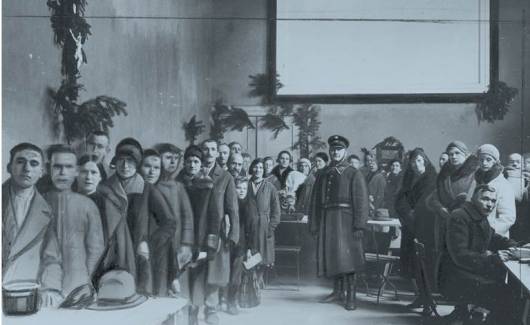
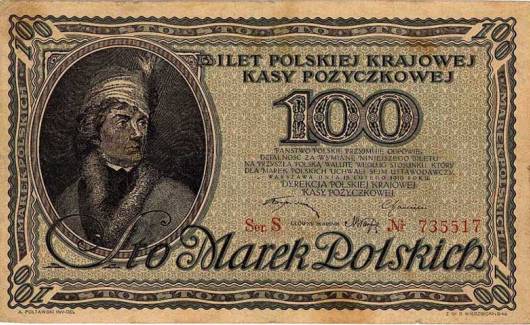
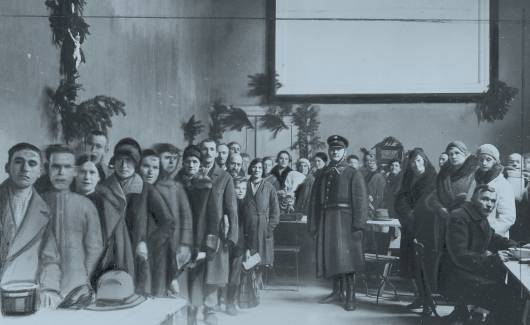


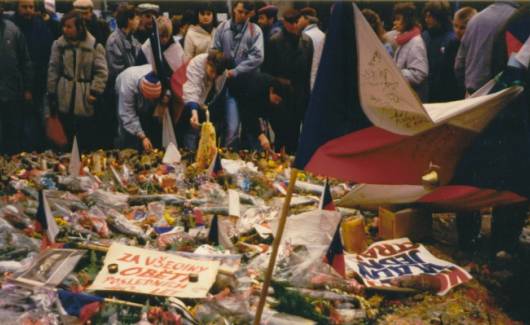
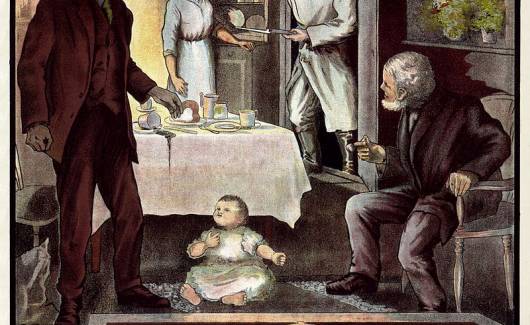
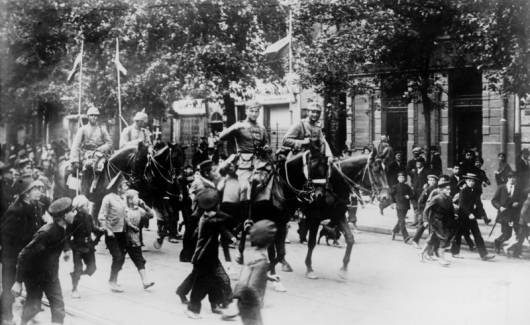
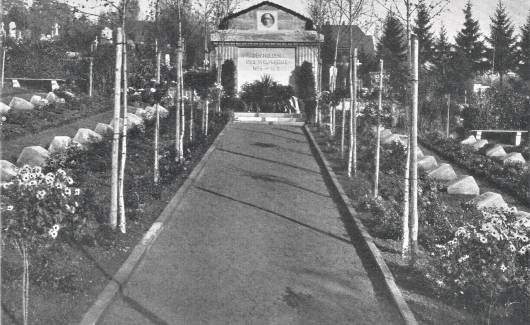
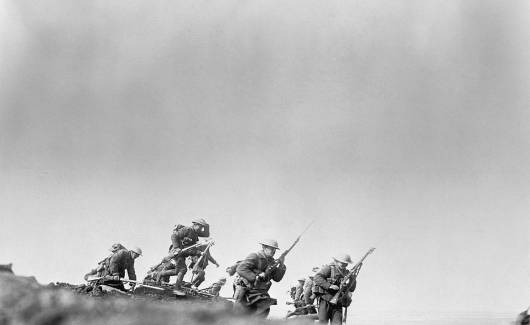
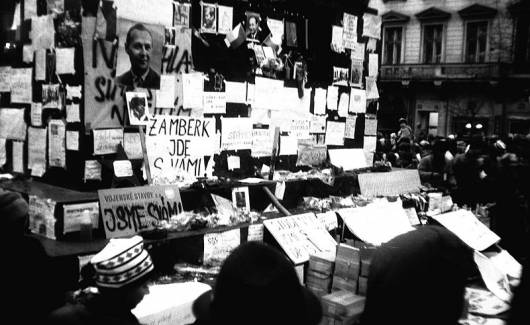
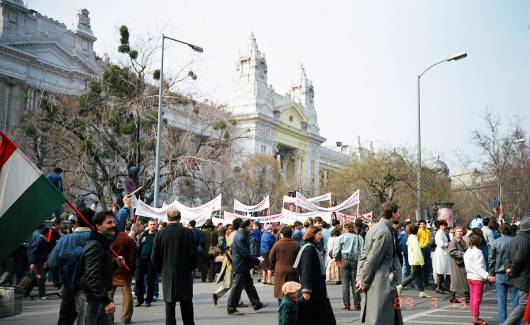
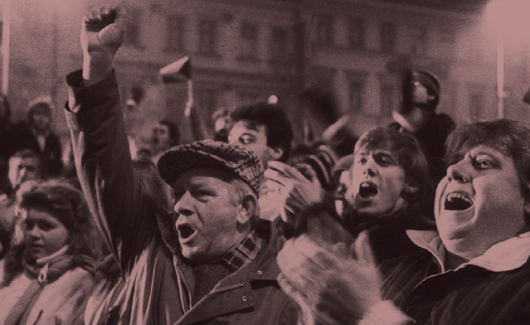
![Photo of the publication The Murder of Armenians – Armenocide – Genocide – Genocide Prevention [...]](https://enrs.eu/media/cache/thumbnail_530_325/uploads/media/5c5af1e6595d0-the-eternal-flame-armenian-genocide-memorial-in-yerevan.jpg)
![Photo of the publication The Military Cemetery as a Form of the Cult of the Fallen Soldier [...]](https://enrs.eu/media/cache/thumbnail_530_325/uploads/media/5c59b0c2f04c0-studies-1.png)
